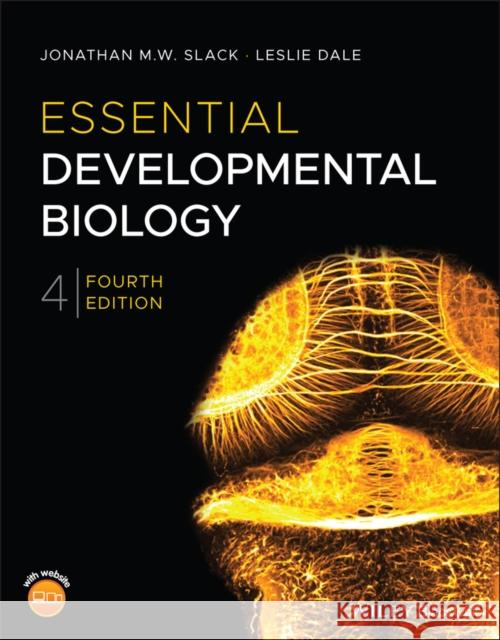Essential Developmental Biology » książka



Essential Developmental Biology
ISBN-13: 9781119512851 / Angielski / Miękka / 2021 / 544 str.
Essential Developmental Biology
ISBN-13: 9781119512851 / Angielski / Miękka / 2021 / 544 str.
(netto: 526,74 VAT: 5%)
Najniższa cena z 30 dni: 529,99 zł
ok. 22 dni roboczych.
Darmowa dostawa!
Glosariusz/słownik
Preface, ixAbout the companion website, xiSection 1: Groundwork, 11 The excitement of developmental biology, 3Where the subject came from, 3Impact of developmental biology, 4Future impact, 52 How development works, 7Ultrashort summary, 7Gametogenesis, 10Early development, 13Growth and death, 193 Approaches to development: developmental genetics, 25Developmental mutants, 25Sex chromosomes, 27Maternal and zygotic, 27Genetic pathways, 28Genetic mosaics, 30Screening for mutants, 31Cloning of genes, 32Gain-and loss-of-function experiments, 32Transgenesis, 32Other gain-of- function techniques, 34Targeted mutagenesis, 34Other loss-of- function systems, 35Gene duplication, 36Limitations of developmental genetics, 374 Approaches to development: experimental embryology and its molecular basis, 39Normal development, 39Developmental commitment, 42Criteria for proof, 48Transcription factors, 48Transcription factor families, 50Other controls of gene activity, 51Signaling systems, 51Genetic regulatory networks, 575 Approaches to development: cell and molecular biology techniques, 61Microscopy, 61Optical techniques, 61Confocal, multi-photon, and light sheet microscopes, 63Image capture, 63Anatomical and histological methods, 64Microinjection, 66Study of gene expression by molecular biology methods, 67Study of gene expression by in situ methods, 72Reporter genes, 75Cell-labeling methods, 766 Cells into tissues, 81Cells in embryos, 81Cytoskeleton, 82Small GTP-binding proteins, 84Extracellular matrix, 84Cell movement, 85Epithelial organization, 86Morphogenetic processes, 88Section 2: Major model organisms, 977 Major model organisms, 99The big six, 99Access and micromanipulation, 101Genetics and genomes, 101Relevance and tempo, 102Other organisms, 1028 Xenopus, 107Oogenesis, maturation, and fertilization, 108Normal development, 109Fate maps, 114Experimental methods, 115Processes of regional specification, 1199 The zebrafish, 135Normal development, 135Fate map, 140Genetics, 141Reverse genetic methods, 144Embryological techniques, 145Regional specification, 145Other roles of the zebrafish, 15010 The chick, 153Normal development, 154Fate map, 158Regional specification of the early embryo, 159Description of organogenesis in the chick, 16411 The mouse, 173Mammalian fertilization, 173Normal development of the mouse, 177Fate map, 184Regional specification in the mouse embryo, 185Transgenic mice, 190Embryonic stem cells, 192Knockouts and knock-ins, 192Nuclear transplantation and imprinting, 196X-inactivation, 196Teratocarcinoma, 19812 Human early development, 203Human reproduction, 203Preimplantation development, 205Human embryonic stem cells, 207Human postimplantation development, 208Postimplantation diagnosis: chorionic villus sampling and amniocentesis, 211Ethics of human development, 21113 Drosophila, 217Insects, 217Normal development, 219Fate map, 222Pole plasm, 224Drosophila developmental genetics, 224The developmental program, 227The dorsoventral pattern, 228The anteroposterior system, 23214 Caenorhabditis elegans, 247Adult anatomy, 248Embryonic development, 249Regional specification in the embryo, 251Analysis of postembryonic development, 259The germ line, 262Programmed cell death, 264Section 3: Organogenesis, 26915 Techniques for studying organogenesis and postnatal development, 271Genetics, 271Clonal analysis, 275Tissue and organ culture, 278Cell analysis and separation, 27916 Development of the nervous system, 283Overall structure and cell types, 283Regional specification, 286Neurogenesis and gliogenesis, 292The neural crest, 299Development of neuronal connectivity, 30317 Development of mesodermal organs, 315Somitogenesis, 315Myogenesis, 322The kidney, 323Germ cell and gonadal development, 326Sex determination, 330Limb development, 330Blood and blood vessels, 340The heart, 34318 Development of endodermal organs, 355Normal development, 355Organization of the gut tube, 356Fate map of the endoderm, 359Experimental analysis of endoderm development, 359The pancreas, 36619 Drosophila imaginal discs, 373Metamorphosis, 373Genetic study of larval development, 374Disc development, 378Compartments and selector genes, 378Regional patterning of the wing disc, 381Regeneration and transdetermination, 384Morphogen gradients and polarity, 387Section 4: Growth, evolution, regeneration, 39120 Tissue organization and stem cells, 393Types of tissue, 393Tissue renewal, 397Stem cells, 401Intestinal epithelium, 403Epidermis, 408Hair follicles, 410Hematopoietic system, 415Mesenchymal stem cells and "transdifferentiation", 419Spermatogonia, 41921 Growth, aging, and cancer, 425Growth: control of size and proportion, 425Biochemical pathways of growth control, 426Growth control in insects, 429Growth control in mammals, 431Liver regeneration, 433Growth in stature, 434Aging, 436Cell autonomous processes, 437The insulin pathway and aging, 438Caloric restriction, 438Cancer, 440Classification of tumors and precursor lesions, 440Molecular biology of cancer, 442Cancer stem cells, 443Cancer progression, 444Cancer therapy, 44522 Pluripotent stem cells and their applications, 449Human embryonic stem cells, 449Induced pluripotent stem cells, 451Somatic cell nuclear transfer, 453Direct reprogramming, 454Applications of human pluripotent stem cells, 455Cell transplantation therapy, 457Cell transplantation therapies using pluripotent stem cells, 459Transplantation therapy for diabetes, 460Retinal pigment epithelium, 462Spinal repair, 463Cardiomyocytes, 463Parkinson's disease, 463Introduction of new therapies, 46523 Evolution and development, 469Macroevolution, 470Molecular taxonomy, 471Phylogeny of animals, 472The fossil record, 473The primordial animal, 474Basal animals, 479What really happened in evolution?, 481Segmented body plans and Hox genes, 482Insect wings and legs, 483Atavisms, 483Vertebrate limbs, 48524 Regeneration of missing parts, 491Types of regeneration, 491Distribution of regenerative capacity, 491Planarian regeneration, 492Insect limb regeneration, 497Vertebrate limb regeneration, 499The process of limb regeneration, 499The source of cells for regeneration, 501Regeneration of regional pattern, 502Regeneration: ancestral or adaptive property?, 508General properties of regeneration, 509Glossary, 513Index, 527
Professor Jonathan M.W. Slack is an emeritus professor of the University of Bath, UK, where he was Head of the Department of Biology and Biochemistry; and the University of Minnesota, USA, where he was director of the Stem Cell Institute. He is a member of the European Molecular Biology Organization and a ??Fellow of the Academy of Medical Sciences. He has published numerous research papers on developmental biology as well as five other books, including The Science of Stem Cells (Wiley-Blackwell 2018).Professor Leslie Dale is Professor of Developmental Biology at University College London, UK, where he was Head of Teaching for the Department of Cell and Developmental Biology. He teaches developmental biology to both undergarduate and medical students. For his PhD he studied regeneration in Drosophila imaginal discs and subsequently the development of Xenopus embryos.
1997-2024 DolnySlask.com Agencja Internetowa
KrainaKsiazek.PL - Księgarnia Internetowa









